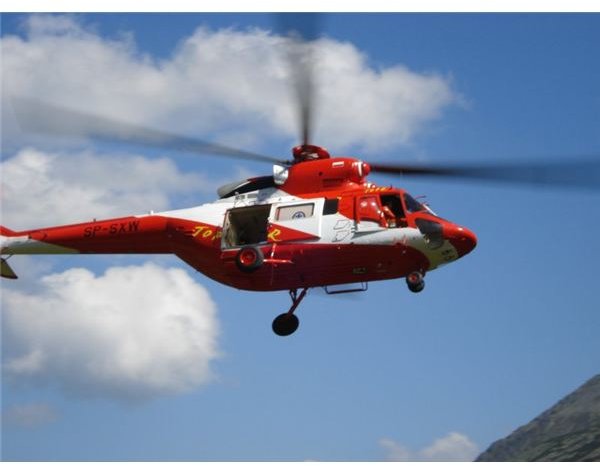How Adverse Weather Affects Helicopter Flight
Any helicopter pilot needs to take weather conditions into consideration. Safe flying requires good weather conditions. However, bad weather can be unpredictable, so all pilots should take special precautions to deal with them. Some of the more dangerous weather conditions are heavy fog, thunderstorms, winds, frosts, and blizzards.
Note, this is a general information article and not to be taken as advice for pilots of aircraft.
Fog, Rain, and Snow
Good visibility is necessary for safe flying. For this reason heavy fog, rain, and snow can be very dangerous. A pilots best option is simply to avoid flying in inclement weather altogether. Pilots and air traffic controllers keep a close eye on the weather to know when to cancel flights.
Heavy fog can also be problematic during take off and landing. In such cases, there is no option other than diverting the helicopter to a base where there is minimum or no fog.
Turbulence
Sometimes accidents can happen even in clear weather. This is due to conditions like clear air turbulence (CAT), which occurs in clear air and can’t be ascertained by helicopter’s radar. CAT generally takes place in cloudless skies and at higher altitudes when a sudden disturbance in the air is caused by small scale wind velocity gradients around the high speed air of the helicopter’s fan. The high velocity air comes in contact with much slower air, resulting in sudden air currents and turbulence around the helicopter. Though experienced and specially trained pilots can easily make out CATs through weather charts, turbulence is an evil which cannot be seen and prevented. CAT can only be felt by the bumps generated by the turbulence, making it extremely difficult to deal with.
Frosty Weather
Frosty weather is actually the most dangerous of conditions. This happens when the air temperature is below freezing and the humidity level in the atmosphere is high. This leads to adverse effects on the helicopter including control problems and even crashes.
Frosty weather can also affect a helicopter when not in use. All ice needs to be cleared off from any helicopter left outdoors in frigid weather. Pilots will often sprinkle a warm anti-freeze solution on the helicopter to prevent the formation of ice externally and internally. For additional safety, even the landing-base should be cleared of snow and ice. De-icing salt was frequently used for this purpose up to a few years ago, when it was proven that it may result in corrosion or end up being sucked into the helicopter’s engine causing damage. The best option would be to store helicopters in a hangar when not in use to avoid build-up of snow and ice as much as possible.
Direction and Speed of the Wind
The wind’s direction and speed also plays an important role in piloting a helicopter. Headwind, the wind that flows opposite to the path of the helicopter, slams the helicopter’s nose and slows it down, whereas a tailwind push forces the helicopter in the same direction raising its speed. This is an extremely dangerous condition that has led to loss of control and accidents in the past. Just like headwind, crosswinds that blow across the path are also equally dangerous to the helicopter. Crosswinds have a tendency to fluctuate and they especially vary on the basis of the method the pilot chooses to approach the landing zone. Pilots who are aware of vectors can easily estimate whether the force of crosswind is headwind or tailwind.
Helicopter pilots need to maintain adequate vision references for helicopters under Visual Flight Rules (VFR) in order to maintain proper control, whereas helicopters under Instrument Flight Rules (IFR) are certified to be flown by instrument-related pilots without any visual references. Weather conditions for take-off and landing of this type of flight varies depending on the location, equipment, and facilities available.
Though aviation technology has advanced drastically, sometimes in adverse weather conditions, patience and alertness can go a long way in maintaining safe flight status, be it caused by bad weather or turbulence.
References
“Helicopter Crash in Bad Weather” Australian Transport Safety Board: https://www.atsb.gov.au/aviation/editorials/helicopter-crash-in-bad-weather.aspx
“Aviation Forum” Airliners.net: https://www.airliners.net/aviation-forums/tech_ops/
Image Credit - Wikimedia GNU Free Documentation License (https://wikimediafoundation.org/wiki/File:P.C.S.C._-_Helicopter.jpg)
